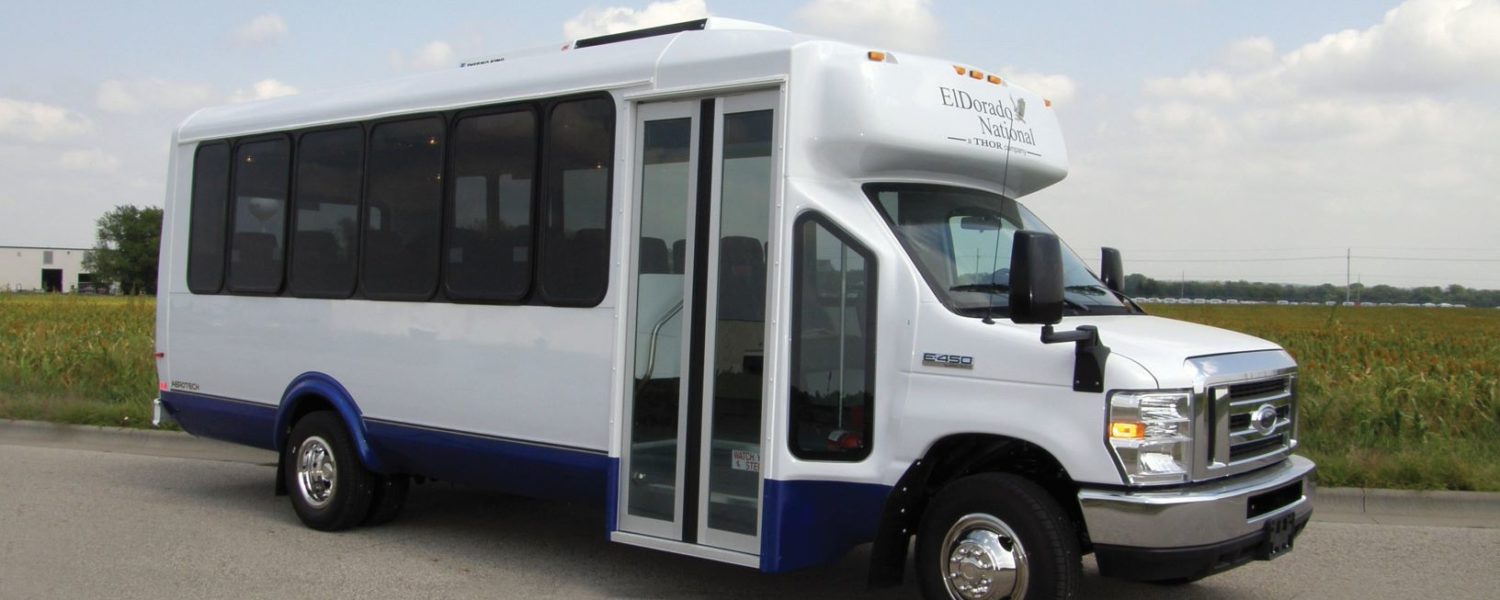This article originally appeared in the January 2012 issue.
This article is courtesy of Mid America Coach, www.midamericacoach.com.
Here are the top 10 things you need to know about buying a used shuttle bus.
- Age
Newer is always better.
- Mileage
Used shuttles come out of all kinds of applications. Churches typically accumulate 6,000 – 8,000 miles per year.
- Seating Capacity
A Commercial Driver’s License is required by federal law in order to operate any vehicle with seating for more than 15 people including the driver. This includes wheelchair positions and any fold up seats over said wheelchair positions.
Additionally, this is further dictated by the manufacturer’s placard stating the number of seats that the bus was designed for. Simply removing some seats will not change the CDL requirement per the placard.
- Chassis
Most shuttle buses in the 10,000 to 14,000 lb GVWR range are going to be Fords. Ford has supported the bus industry since its inception and through incentives and continual product development and improvements.
- Engine
Gasoline engines rule the shuttle bus world in the 25 passenger and under sizes. Some diesels are available; however, in recent years, the availability of diesel engines and their high additional costs has limited their availability in the used market. Newer gasoline engines will give you comparable gas mileage as a diesel.
The most common thought is that diesels give you better mileage. However, in the past five years or so, improvements in gasoline efficiencies have negated the diesel advantage. Gas or diesel, you can figure on 8 to 10 mpg depending on speed, load, temperature, and location.
If you are insistent on having a diesel or the bus that you are looking at is a diesel, you will find the 7.3 liter PowerStroke diesel in 2003 and earlier chassis. And, while the newer 6.0 liter diesel earned a poor reputation on its introduction in 2003, this engine did not arrive in the E-series used in shuttle buses until 2004, long after those issues were resolved.
In fact, the later years of the 6.0 Liter Ford Diesel has enjoyed better reliability statistics than the 7.3 PowerStroke engine.
Additionally, due to the initial added cost of the new diesel engine, more and more users are switching back to gasoline power, making used diesel powered buses harder and harder to come by.
In the large chassis, GM 5500, Internationals and Freightliners, diesels are all that is available. The GM Duramax has a good track record, as does the Cummins typical of the International and Freightliner chassis. With the larger chassis, you can figure on 6 to 8 mpg depending on speed, load, temperature, and location.
- Appearance
Since buses almost always sit outside in the weather, the older the vehicle, the more likely the weathering will be greater. Also, most lettering and logos added over the past five years are vinyl. Once removed, they will still be visible due to lack of fading under them.
Rear heaters should be under the seats. If they are in the middle of the aisle, this is an indication that the bus came out of a parking lot application and that someone has turned the seats around to make the bus more marketable. Beware on this, because parking usage are some of the most severe shuttle bus applications.
- Flooring
The flooring used in shuttle buses is plywood. 5/8” thick is typically standard, while most transit agencies will spec 3/4” thick flooring; and all buses are undercoated. However, certain buses are prone to more leaks than others.
Walk the floor of the bus. Beware if you feel soft spots (mushy or spongy), especially around the entrance and wheelchair doors and behind the rear wheel wells. Generally speaking you are looking at over $5,000 to replace flooring.
- Air Conditioning
Depending on where the bus was operated, it will dictate the amount of rear AC and heat installed. A good bus dealer can tell you at a glance the size of the rear AC and heat and whether or not it is suited for you climate. It is always better to have too much than too little.
- Prior Use
As with any used vehicle purchase, get a CarFax report. Any reputable bus dealer should be able to provide you with such a report upon request.
- Values
New shuttle buses today list for more than $50,000. So, you will not find buses that are 2-3 years old with less than 10,000 miles on them for $10,000. They simply do not exist any more than you’d find a similarly aged and priced Lexus.












